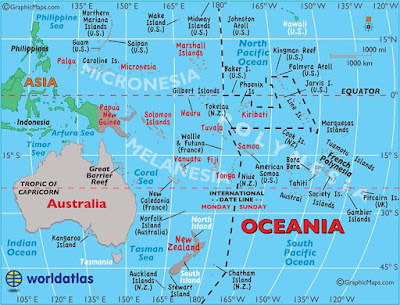Greenland - Earth's Largest Island!
Greenland is the world's largest island.
It has a population of only 50,000 residents, because of its cold climate. Most of the civilian population lives in the southern part of the island, on the coasts.
The capital of Greenland is Nuuk.
The island is the least densely populated country in the world, with a density of 0.26 people per square kilometer.
In Greenland, there are no forests. In the south, at the coastal area, only some dwarf trees are found.
Greenland is a Danish-occupied territory of Denmark, but Greenland is not a member of the European Union. It is part of the North American continent.
The island has many mountains. All of the cities are on the coast, because everywhere else is covered by a big layer of ice.
The name of the country in the indigenous Greenlandic language is Kalaallit Nunaat ("land of the Kalaallit")
The Kalaallit are the indigenous Greenlandic Inuit people who inhabit the country's western region.
The average daily temperature of Nuuk, Greenland varies over the seasons from −8 to 7 °C (18 to 45 °F). The total area of Greenland is 2,166,086 km2 (836,330 sq mi) (including other offshore minor islands), of which the Greenland ice sheet covers 1,755,637 km2(677,855 sq mi) (81%) and has a volume of approximately 2,850,000 km3 (680,000 cu mi).The highest point on Greenland is Gunnbjørn Fjeld at 3,700 m (12,139 ft) of the Watkins Range (East Greenland mountain range). The majority of Greenland, however, is less than 1,500 m (4,921 ft) in elevation.
The ice flows generally to the coast from the centre of the island.
All towns and settlements of Greenland are situated along the ice-free coast, with the population being concentrated along the west coast. The northeastern part of Greenland is not part of any municipality, but it is the site of the world's largest national park, Northeast Greenland National Park.
There are approximately 700 known species of insects in Greenland, which is low compared with other countries (over one million species have been described worldwide). The sea is rich in fish and invertebrates, especially in the milder West Greenland Current, and a large part of the Greenland fauna associated with marine production, including large colonies of seabirds. The few native land mammals in Greenland include the polar bear, reindeer, arctic fox, arctic hare, musk ox, collared lemming, ermine, and arctic wolf.
There are dozens of species of seals and whales along the coast. Land fauna consists predominantly of animals that have spread from North America or for a lot of birds and insects coming from Europe. There are no native or free-living reptiles or amphibians on the island.
The Greenlandic economy is highly dependent on fishing. Fishing accounts for more than 90% of Greenland's exports.The shrimp and fish industry is by far the largest income earner.
Greenland is abundant in minerals. Mining of ruby deposits began in 2007. Other mineral prospects are improving as prices are increasing. These include iron, uranium, aluminium, nickel, platinum, tungsten, titanium, and copper.
A majority of the population speaks Greenlandic, most of them bilingually. It is spoken by about 50,000 people, making it the most populous of the Eskimo–Aleut language family, spoken by more people than all the other languages of the family combined.
About 12% of the population speak Danish as a first or sole language, particularly Danish immigrants in Greenland, many of whom fill positions such as administrators, professionals, academics, or skilled tradesmen.
English is another important language for Greenland, taught in schools from the first school year.




व्हेरी गुड
ReplyDeletethanks..
Delete